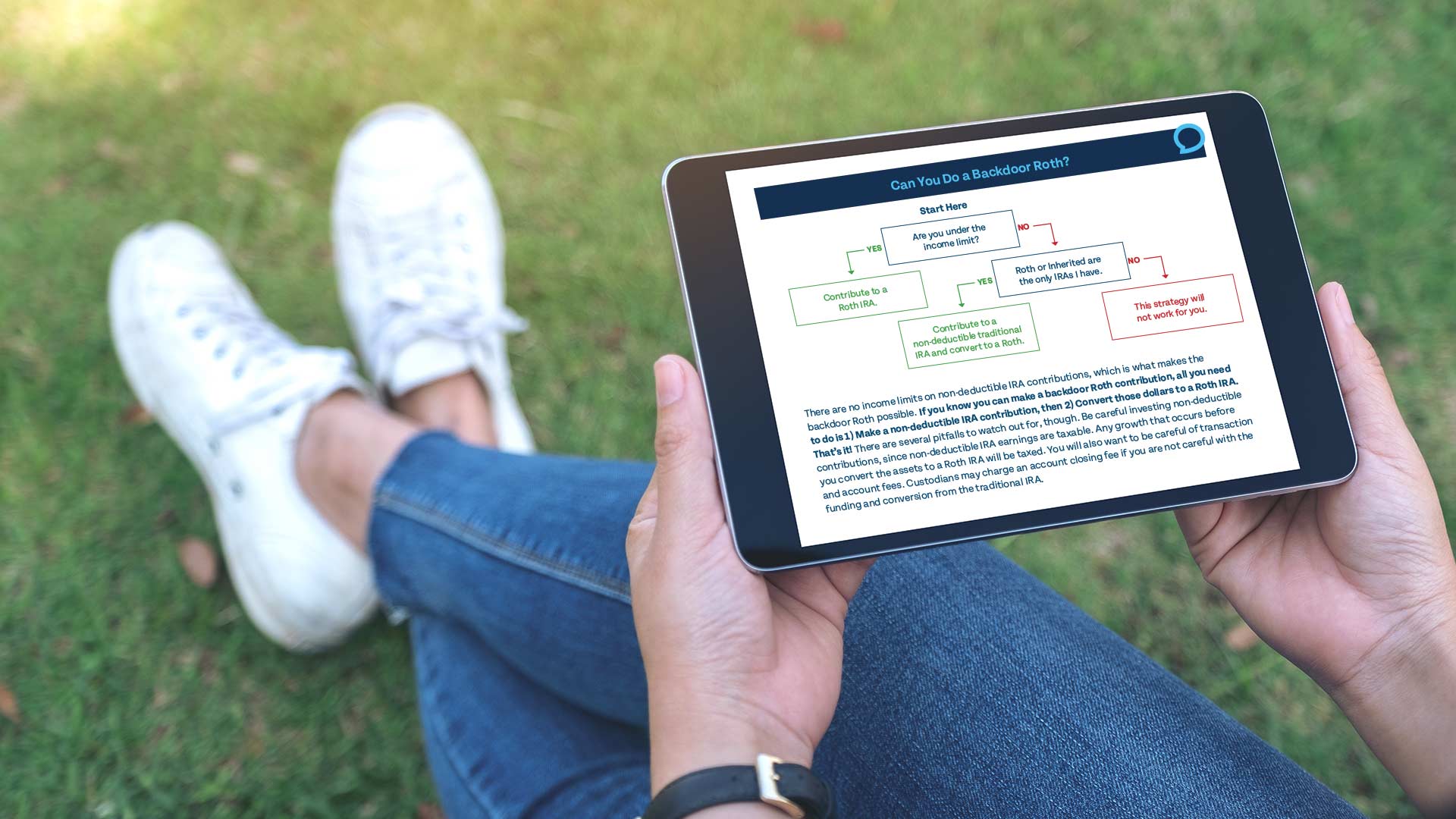
Change your life by
managing your money better.
Subscribe to our free weekly newsletter by entering your email address below.

Subscribe to our free weekly newsletter by entering your email address below.
Your step-by-step guide to making smart financial decisions with every dollar.
Generosity is Step Zero
Giving—whether time or money—is something anyone can do at any stage. If you’re generous with a little, you’re likely to be generous with a lot.
Bedazzle Your Basic Life
Don’t live like a miser just to retire early. Enjoy life’s luxuries—like travel or hobbies—in a responsible and sustainable way.
FOO Is Not a Straight Line
Life happens. You may need to dip into savings or pause investing. Have a plan to get back on track quickly when that happens.
Save enough cash to cover your largest deductible (e.g., $5,000 for health insurance).
Use a high-yield savings account.
This is your first mini-emergency fund.
If your employer offers a 401(k) match, contribute enough to get the full match.
This is essentially free money—a 50% to 100% instant return.
Prioritize paying off:
Credit cards (always)
High-interest car loans or student loans (case-dependent)
Credit card debt is “chainsaw dangerous” and should be crushed ASAP.
Build a 3–6 month emergency fund.
Cash from Step 1 counts toward this.
This creates a cushion for job loss, emergencies, or unexpected expenses.
Assuming you’re eligible, max out:
Roth IRA
Health Savings Account (HSA)
These accounts offer powerful tax-free growth.
Go beyond the match and fully fund:
401(k)
403(b)
457
TSP (Thrift Savings Plan)
Max out or contribute until you’ve saved 25% of your gross income combined across steps 5 & 6.
Save 25% of your gross income toward retirement/financial independence.
Excludes mortgage payments or non-retirement savings.
If you already hit 25% by maxing retirement accounts, congrats—you’re there!
These are prepaid future expenses and deeply personal:
Real estate investments
Early retirement
College savings for kids
Dream travel or lifestyle goals
Secure your future first, then help others (think: oxygen mask rule).
Mortgages and other debt with interest rates below what your money could earn elsewhere (e.g., < 4%) fall here.
Your cash is likely better utilized elsewhere—investing, saving, or enjoying life.
Can I Skip Steps or Go Out of Order?
Sure—but be cautious. Each step is placed intentionally to minimize risk, maximize returns, and avoid costly mistakes.
Where Do Big Purchases Like Cars or Houses Fit In?
Follow FOO up to Step 4 (emergency fund fully built) before buying a home.
For vehicles and other major purchases, ensure they don’t disrupt your progress in the first 4–5 steps.
If you want a full breakdown and deeper understanding of every step (plus tools and worksheets), check out the remastered FOO course at learn.moneyguy.com.
Own your financial life—or it will own you.
Subscribe on these platforms or wherever you listen to podcasts! Turn on notifications to keep up with our new content, including:
If you’re familiar with The Money Guy Show, you know about the Financial Order of Operations—or the FOO, as we like to call it. As the name suggests, it’s a nine-step guide for what you can do with your next dollar. But you may not know what each step is and why we put it where we did. So we wanted to get into all of that today so that you guys have this information all in one place. We’re going to hit them at a pretty high level, as well as answer some common questions we receive about the Financial Order of Operations. If you want a deeper dive into all this information, we have an entire remastered course that runs you through all things FOO and all things money. So with that, let’s jump right in.
Before we get to the steps themselves, there are some ground rules that we need to cover that fall outside of the FOO and apply to life no matter what stage you’re in on your financial journey. Number one is that generosity is actually Step Zero. We believe that generosity and supporting causes that are important to you—whether it’s your time or your money—is something that anyone can do. And if you’re generous with a little, more than likely you’re going to be great and even generous with a lot. One thing we’d love for you to be generous with is that like button, so show it some love if you haven’t already.
Number two is: bedazzle your basic life. We don’t want you living life like a miser just so you can retire a little bit earlier. But we do want you indulging in life’s luxuries—whether it’s travel or consumption—in a responsible manner.
And number three: the Financial Order of Operations is not a straight line. Sometimes you’ll need to dip into an emergency fund or go back to rebuilding it or even pause investing altogether because life will happen. Have a plan to get yourself back on track as fast as possible.
Now let’s get right into the Financial Order of Operations.
Step number one is saving up your highest insurance deductible in cash, ideally in something like a high-yield savings account. This is your first step in building a full-fledged emergency fund. This means if your highest insurance deductible is your health insurance deductible at $5,000, that’s your savings target to complete Step One. This comes before any sort of investing or even debt because without a cash buffer, you run the risk of making desperate decisions when—and it’s not if—things go sideways.
Step number two is your employer match. This is where the fun begins. If you have access to an employer match through something like a 401(k), this could mean receiving anywhere from 50% to 100% rate of return on your money. And that’s why, once you have a starter emergency fund covered, this is the next step. A lot of debt crusaders will tell you that you have to pay off most or all of your debt before you can even start or touch investing, but that is bad math. Even with credit card rates as high as 20% to 30%, that employer match can still beat it and jump-start your savings for the future. Get that free money.
Step number three is tackling any high-interest debt and getting it down to zero. As far as what counts as high-interest debt, it depends a lot on your age and the type of debt. Sometimes it can be cars, sometimes it can be student loans—but always credit cards. Credit card debt is chainsaw dangerous. It’s way too dangerous to play the arbitrage game.
Step four is building up your emergency reserves. That’s right—cash is so important that we’ve designed two steps for it out of our nine steps. For this, we suggest anywhere from three to six months of living expenses saved up in cash. That way, in the event of some sort of emergency or job loss, you can cover your needs while you get back on your feet. And the good news is the cash from Step One counts in this number. You do not have to start from zero.
Once Step Four is done, that means you’ve got your employer match, you’ve got no high-interest debt, and you’ve got your emergency fund fully funded. Now let’s get into the fun stuff of tax-free growth. That’s Step Five, and it’s all about maxing out your Roth IRA and your Health Savings Account, assuming you’re eligible. Beyond an employer match, this is where we get into the wonderful world of investing, because they offer major tax incentives and let your army of dollar bills grow tax-free.
Step Six shifts your attention back into retirement accounts. That’s likely a 401(k), 403(b), 457, or Thrift Savings Plan—man, that is a mouthful. Load them up beyond the employer match. We consider Steps Five and Six done once you’ve maxed those accounts out or reached 25% of your gross income. If all those accounts went in one ear and out the other, check out our mini-show right here on the types of investment accounts.
Now we’re getting into the territory where we get a lot of questions. Step number seven, also known as hyper-accumulation, is all about accelerating your journey to financial independence. We suggest hitting a savings rate of 25% of your gross income, and that is for retirement—or like I said, for financial independence—so that does not include mortgages or any savings that are not specifically for that purpose. We won’t get into how we came up with the 25% number—trust me, there’s numbers and math behind it—but we do have a resource at moneyguy.com/resources if you want to know more.
And a quick note: some people might hit 25% just by maxing out their retirement accounts, or maybe even before that, and we would consider that enough to check the box on Step Seven. You can keep that FOO train rolling. Once you’ve hit that 25% savings rate and actually put some thought into how you’ll use this money at financial independence, you’re ready to step into Step Eight.
Broadly speaking, those are prepaid future expenses—but we have a better name for it that’s more fun, and we like to call it “abundance goals.” This is where your personal finance gets really personal. Whatever it is that matters most to you—that could be early retirement, it could be real estate investing, setting aside money for your children, or just living the life you’ve always dreamed of—that’s where you put this money.
A lot of people feel like this is too late in the FOO to put money towards something as important as your kids’ future or education, or toward other areas that are important to you. We’re not saying you have to wait to live your best life—remember, bedazzle your basic life—but we do believe it is essential to secure your own financial future before you decide to put a large portion of your time and money elsewhere. They say it on a plane all the time: secure your own oxygen mask before helping others, including your kids.
And Step Nine is paying off low-interest debt. It’s this late because most often your dollars are simply better served working elsewhere. A 4% rate on your mortgage just isn’t really mathematically a priority when, right now, you’re getting 4%+ on your cash in your high-yield savings account.
There you have it—the Financial Order of Operations.
And before we wrap up, I want to address some of the questions we hear most often. Sometimes people ask us, “Hey, can I skip steps or even go out of order?” And we’re not going to come break down your door—don’t worry. Ultimately, it is your journey. But we did put each step in a specific place for a very specific reason. And if you skip steps, you might be taking on more risk, leaving money on the table, or maybe even creating some extra tax liability and headache.
And other folks want to know: “Hey, where do big purchases like buying cars or buying houses fall into the Financial Order of Operations?” We have our own set of rules and guidelines when it comes to ensuring you’re making a responsible car or home purchase. As it relates to the FOO though, we do suggest that you at least complete Step Four and have a full emergency fund before purchasing that house. That way, if the tide goes out, you’re not swimming naked.
If you want a deep dive covering everything we talked about in this video and even more, be sure to check out our remastered FOO course at learn.moneyguy.com and own your financial life—or it will own you.


Financial Order of Operations®: Maximize Your Army of Dollar Bills!
Here are the 9 steps you’ve been waiting for Building wealth is simple when you know what to do and…
View Resource
Net Worth Template
It’s our favorite time of year: time to complete your annual net worth statement!
View Resource
Net Worth by Age (Compared to Peers)
We did the math. How are you doing relative to your peers? Discover what your Net Worth should be by…
View Resource


How about more sense and more money?
Check for blindspots and shift into the financial fast-lane. Join a community of like minded Financial Mutants as we accelerate our wealth building process and have fun while doing it.




It's like finding some change in the couch cushions.
Watch or listen every week to learn and apply financial strategies to grow your wealth and live your best life.
Subscribe to our free weekly newsletter by entering your email address below.